Japanese Beetle (Popillia japonica) adults feed on blueberry leaves:
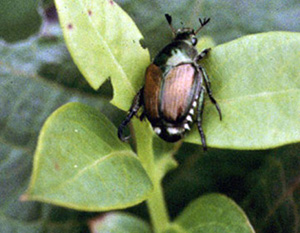
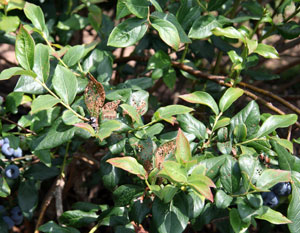
Feeding damage on leaves:
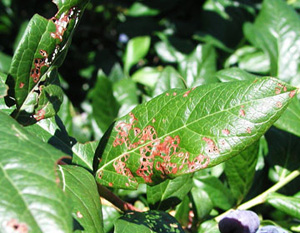
Adults may also feed on the skin of berries.
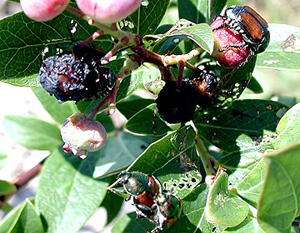
Larvae (grubs) of Japanese Beetles live in the soil for much of the year and will feed on newly planted strawberry, blueberry and raspberry roots, especially plantings following sod or on lighter soils.
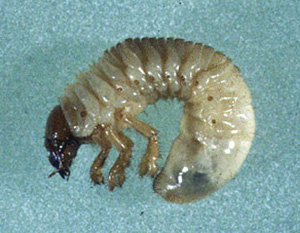
Larvae feeding on roots cause much more damage than adult beetles.
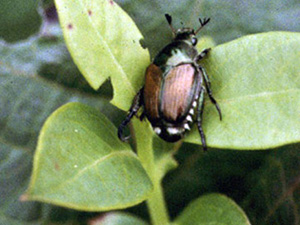
More information on Japanese Beetles (White Grubs):
- Midwest Small Fruit Pest Management Handbook – (pages 46-47)
- White Grubs (OMAFRA)
- Japanese Beetles (University of Minnesota)
Use these resources if you need additional help with diagnosis and to find solutions to your problem.


